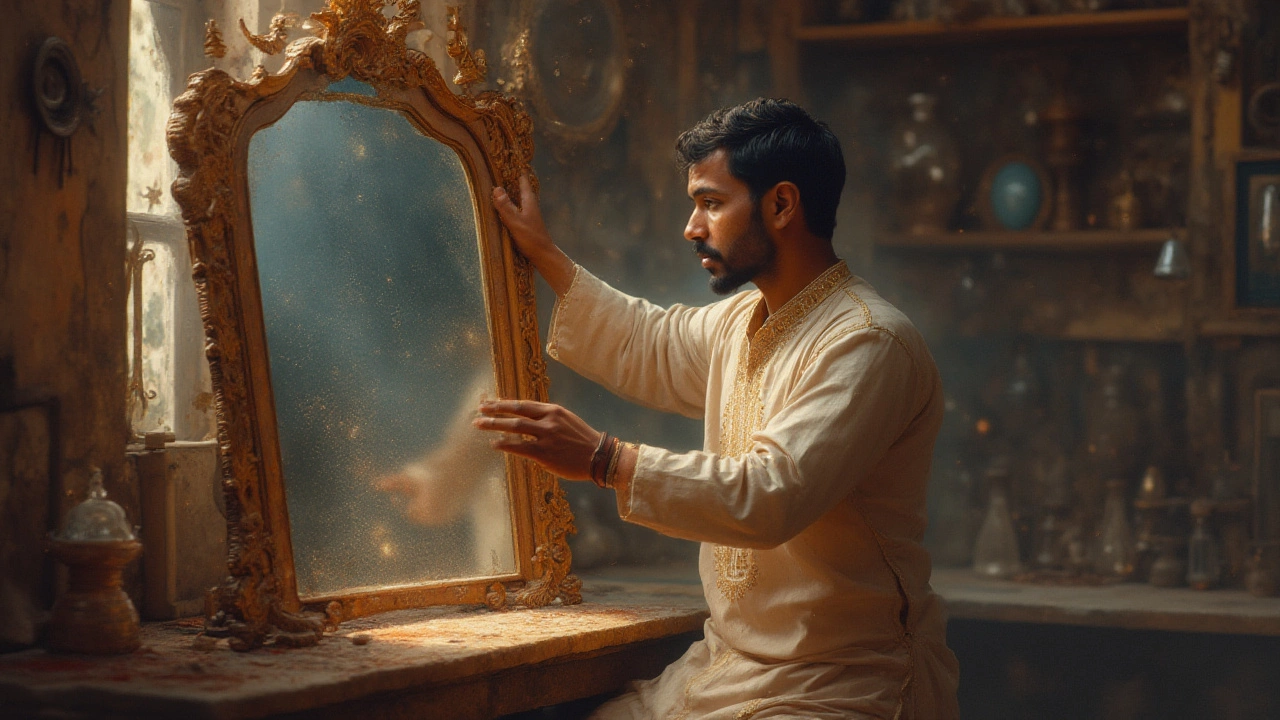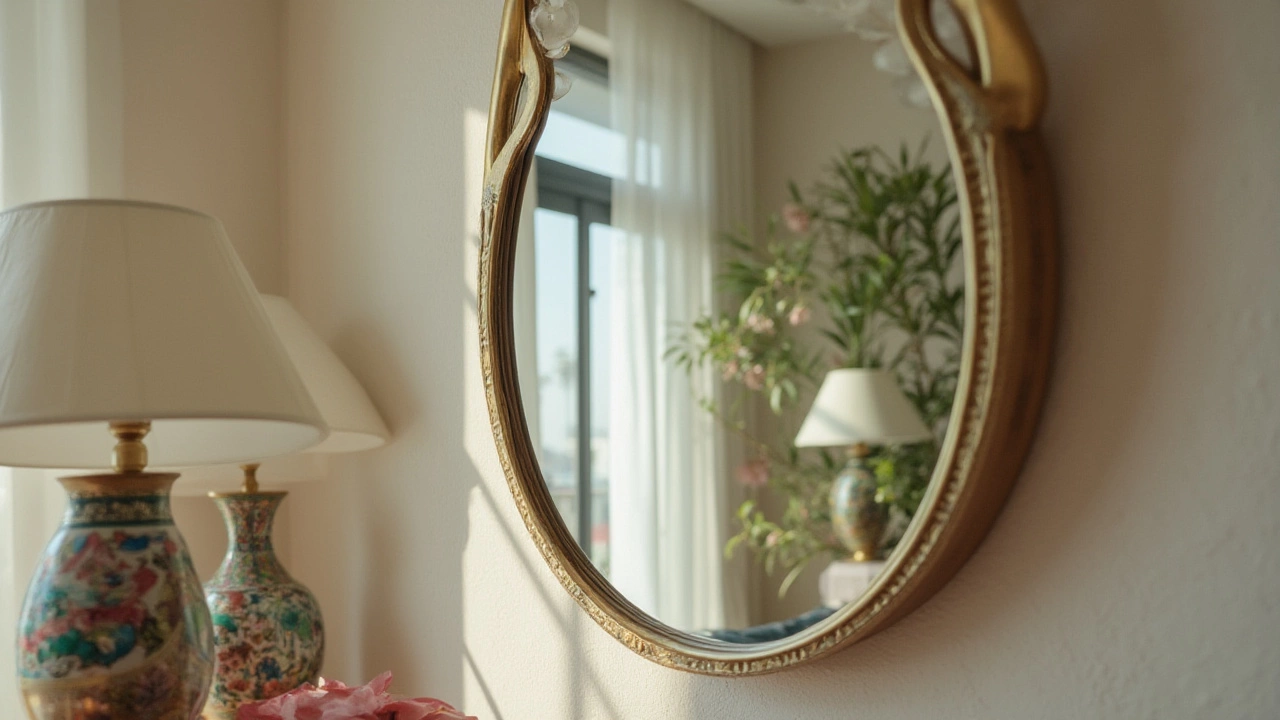Ever stood in front of a mirror, only to realize your face looks stretched, the colors are off, or there are odd dark corners lurking? It’s not just your imagination or a trick of the light—it’s probably the mirror itself. If you’ve ever wondered why some mirrors show every pore crystal clear, while others seem to blur reality or even mess with your outfit colors, there’s more science behind it than you think. And in today’s world, where one bad mirror can make you hate an entire bathroom renovation, knowing what sets a high-quality mirror apart is non-negotiable.
What Makes a Mirror "Good Quality"?
Not all mirrors are created equal. The word "mirror" itself just means a reflective surface—almost anything can serve. But if you want true, flattering, and distortion-free reflection, you need a piece of glass that’s gone through some serious quality control. Let’s break down what really matters.
First, the glass is the core. High-quality mirrors use float glass—a super-smooth, absolutely flat glass made by floating molten glass on a bed of molten tin. This process eliminates ripples, waves, and other weird distortions that cheaper glass can have. Ever tilted your head and seen a funhouse effect? That’s probably because the glass itself wasn't flat enough. So, step one in judging a mirror: Is the reflection sharp and undistorted from corner to corner?
But there’s more. What you see in the mirror is the light bouncing off a reflective backing, usually silver or sometimes aluminum. Many people don’t know this, but the thickness and purity of that silver layer matter a lot. If it’s thin, inconsistent, or has imperfections, you’ll see patches, dark spots, or grayish shadows appear over time. High-end mirrors use a thick, evenly deposited layer of silver nitrate, sealed from air and moisture with protective coatings. For those who leave bathroom fans off after a hot shower—listen up! Moisture sneaks in and starts corroding the backing, causing dreaded black edges (called "desilvering").
Here’s a quick way to check for quality at the store: Hold your finger up to the glass. If the reflected finger and the real finger have a small gap between them, you’re probably looking at a good, thick mirror. If they touch, you might be dealing with lower-quality glass or a thin mirror—not ideal!
The frame and mounting matter, too. A heavy mirror, solidly framed and with proper backing, will last longer and resist warping. If it’s lightweight, wobbly, or flexes when you lift it, that’s a red flag. A reliable mirror should feel substantial; a rickety one rarely holds up for years, especially in humidity-prone areas like bathrooms. Be especially skeptical with ultra-cheap mirrors: manufacturers often cut corners with thin glass, minimal backing, or minimal moisture protection just to hit a price point.
Some quick stats really put things in perspective. Top European brands, especially those from Belgium and Italy, produce mirrors with 5mm thick float glass and multi-layer protective coatings, while budget imports might use 3mm thick glass and just a single coat. That extra 2mm may not sound like much, but it can mean the difference between decades of flawless use and foggy, warped reflections within a year.
| Feature | High-Quality Mirror | Low-Quality Mirror |
|---|---|---|
| Glass Thickness | 5mm | 2-3mm |
| Backing Material | Thick silver nitrate + multiple coatings | Thin aluminum or basic paint |
| Distortion | None to minimal | Frequent warping |
| Frame/Backing | Sturdy, heavy duty | Flimsy, light |
| Lifespan | 10+ years | 2-5 years |
Even Daphne, my youngest, noticed how our old cheap mirror made her look like she was in a circus tent—one half tall, the other squished. After we swapped for a Belgian-made one, no more silly reflections (unless she was pulling faces, of course).
An expert from Glass.com put it simply:
“The key to a mirror’s quality isn’t just the glass, but the combination of perfect flatness and protective coatings that keep your reflection true for years.”So next time you’re shopping, remember: sometimes the price tag actually does reflect what you get!

How to Test Mirror Quality at Home
Alright, you’re not about to carry a microscope to IKEA. But you don’t need one, either. There are a bunch of hands-on tests you can try right in the store or at home to separate true high quality mirror glass from disappointing duds. Let’s get to it.
First up—the finger test is more than just a party trick (but feel free to show it off). Hold your finger perpendicular to the mirror and touch the glass. If you see a gap between the real fingertip and the reflection, the glass is likely thick and the silvering sits behind it properly. If your finger and its reflection seem to kiss, it’s probably a cheaper, thinner mirror with little space between glass and reflective coating. This is especially noticeable on frameless designs.
After that, do a simple visual scan. Stand a few feet back, glance from top to bottom and side to side. Do lines look straight, or do you see any "funhouse" waves? Odd ripples, dips, or curves signal a problem with flatness—it’s either thin glass or poor-quality float glass. Squat down, look upward into a corner, and check for warping. It feels silly, but it catches issues you may never spot at eye level.
Lighting can hide or reveal a lot. Use your phone flashlight and shine it at a shallow angle across the glass. Imperfections like scratches, pits, or debris between the layers will pop out. This works even better at dusk, when ambient light is low but the store or room lights still allow good visibility.
If you’re really examining a mirror for your bathroom or moisture-prone area, peek at the back—the backing and edges tell a real story. A high-end mirror has a uniform colored backing (usually green, gray, or opaque black), with no flakes or bubbles. Desilvering around the edges (little black spots or streaks) means moisture got in and started eating the reflective coat. If you see that in a new mirror, run. For older mirrors, a little minor blackening is almost unavoidable after a decade, but on new stock, it points to shoddy manufacturing or lousy storage before it arrived in your hands.
Weight matters, too. Try to lift it or press gently on the corner. A 5mm thick mirror, even in a modest bathroom size, should feel heavy for its size. If it’s featherlight, the glass is probably thin and vulnerable to quick breakage. For wall mounting, thickness equals durability, especially if the home is busy with kids running around (ask any mom how fast Daphne and her friends can turn hallway mirrors into accidental soccer goals).
A good trick for checking color accuracy is to hold up something vividly colored—in our house, we use a bright red apple—right next to the mirror and see if the color stays true. Cheap mirrors sometimes create a subtle green or gray cast, which is only obvious when you do a side-by-side. If whites look yellowish or blues turn murky, trust your eyes: skip that mirror.
Ask about origin if the shop staff don't offer it up. Many of the highest-quality mirrors come from European and North American manufacturers who have strict quality standards—and honestly, the country of origin is a decent shorthand for quality control. Mass-produced mirrors from some unregulated factories can have surprising flaws, even when they look great at first glance.
If you’re ever buying a mirror online, accept that a little risk is built in. Always check for a clear return policy, and inspect the mirror closely on arrival. “Good” mirrors can be damaged in shipping or have undetected flaws. Take your own smartphone photo of the mirror from an angle instead of straight on, which will reveal ripples or warping much better than a head-on shot.
Sometimes extra features signal quality, too. Mirrors designed to be fog-resistant or made with low-iron glass for crisp color (often labeled as “HD mirrors”) are great if you want perfection. These usually cost more, but you get what you pay for: zero green tint, sharp as day, and resistant to steamy bathroom doom.
In short, don’t just look at a mirror, play with it, poke it, compare it. If it holds up to these at-home tests, you’ve got yourself a solid choice.

How to Care for and Maintain High-Quality Mirrors
Once you’ve splashed out for a great mirror, you’ll want it to look gorgeous for as long as possible. High-quality mirrors are built to last, but a few easy habits keep their shine and clarity for years—even decades.
First rule: avoid harsh chemicals. Bleach, ammonia-heavy glass cleaners, or anything gritty will chew away at the protective coating over time. For spots and fingerprints, use a soft cloth with a vinegar-and-water mix (50/50) or a dab of regular dish soap in warm water. Always spray your cleaner onto the cloth, not straight on the mirror—too much liquid creeping to the edges can start the dreaded desilvering process.
Humidity is the mortal enemy of even the finest mirrors, so for bathrooms, run that exhaust fan as soon as you shower and leave the door open afterward. A study by the National Glass Association found that bathroom mirrors with proper ventilation had four times less edge corrosion over a decade compared to those stuck in steamy rooms. If possible, mount a bathroom mirror away from direct water splash zones.
For framed mirrors, keep an eye on the seams and corners. Wood and some metals can expand or contract slightly with moisture and temperature swings, potentially squeezing or warping the glass. If you notice the frame loosening or the mirror shifting inside it, tighten fixings or see if the manufacturer offers a quick refresh kit.
Every six months or so, take a little time to pull the mirror forward and check the back. Look for early warning signs like bubbling of the backing, darkened spots, or peeling. If spotted early, some small fixes (like applying clear nail polish to the very edge) can slow the spread of issues.
When cleaning the glass, go in gentle, circular motions and avoid putting pressure near the edges. It’s tempting to scrub away that stubborn toothpaste dot with elbow grease, but over time, repeated stress there can start little cracks or let moisture in. If you accidentally scratch the glass, all is not lost—a jeweler’s polishing kit or a glass repair cream can buff out minor blemishes, but deep scratches are permanent.
Kids seem magnetically drawn to mirrors—at least, that’s the law at my house. Remind little ones not to bang toys, markers, or who-knows-what-else on the glass. If you spot chips at the edges, a touch of clear epoxy will keep them from spreading.
For mirrored closet doors or very large pieces mounted off the ground, check the mounting brackets yearly. Gravity, door slamming, or even building settling can loosen things up. The last thing anyone wants is a wall-mounted mirror coming loose and shattering.
And if you want to future-proof even further, consider investing in a mirror with a copper-free backing. These new-generation mirrors resist oxidation better, meaning you’ll dodge the unsightly black edges longer. Most top mirror makers switched to copper-free around 2012, so ask about this specifically if you’re buying a new mirror. A little heads-up here: copper-free mirrors are also more environmentally friendly, which is a bonus for us planet-conscious decorators.
If style is your game, don’t fear updating the frame or backing down the line. A mirror with excellent glass and backing doesn’t need to be replaced just because your sofa color changes—swap out the frame or add a decorative backing for a fresh vibe. This is cheaper and more sustainable than discarding the mirror itself.
So next time you get that “are you sure you want to mount a 50-pound glass slab in the hallway?” look, just remember—with smart care and a little vigilance, a top-tier mirror is an investment that sticks with you through every home makeover, family milestone, and, yes, even toddler mischief spree. Give it a little love, and it’ll love your reflection right back.
